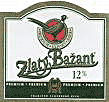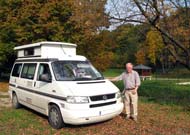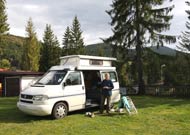SLOVAKIAN
CAMPSITES:



 Top
of page Top
of page
|
Campsites (taborisko)
in Slovakia are titled Kemping or Autocamp
abbreviated to ATC.
They are still relatively undeveloped,
having evolved from chalet-huts (chaty) encampments (Chatová
osada) which provided cheap accommodation dating back to
the Communist era. Many campsites still have chaty,
some now looking semi-derelict, but still used; other
campsites form an annexe to hotels, pensions or leisure
complexes.
Standards
are variable: there is no national accreditation process for
campsites and despite the transition to market economy since
1990, commercial
competitiveness seems to have made little impact. The
majority of sites we experienced had pretty basic standards of facilities
but generally were clean with hot water, and many had
cooking facilities (common in Eastern Europe) with wash-ups
(kuchyna lit. kitchen). With some notable exceptions (see our Campsite Review),
campsite owners generally were not particularly welcoming, showing
casual and indifferent attitudes
which clearly indicated no awareness of the link between
commercial success or failure and caring hospitality and helpfulness towards their guests, a mind set surprisingly
dating from pre-1990 centrally planned economy days. As the
numbers of Western European visitors increase, demanding higher
standards and bringing greater competitiveness, some Slovak
campsite owners are going to have to attend a charm course
or go out of business.
 Slovakian
Campsites Review Slovakian
Campsites Review
Campsite opening
dates: the Slovak camping season is quite short with
campsites opening from April/May to September; outside these
times, you will be hard-pressed to find open sites; we just
about managed into mid-October. It is also worth also bearing in mind that
even though a campsite is officially closed, they may let you stay anyway. There are few sites open all year round;
those we found are identified in the Campsite Review.
Websites
listing Slovakian campsites: there is no single
organisation or web site listing all campsites to help with pre-trip planning;
the most useful sites we found, none of them complete and
missing essential details of opening and closing dates,
were:
 Travel Guide - Slovakia Travel Guide - Slovakia
 Slovakian Tourist Agency - campsites Slovakian Tourist Agency - campsites
 ABC Slovakia - Autocamps ABC Slovakia - Autocamps
 Slowakije Vakantieland Slowakije Vakantieland
Another useful
campsite-listing is the web
site of the Dutch camping organisation ACSI. Although more
selective in the sites it includes, their Google mapping facility is a helpful means of
pinning down a campsite's location, essential with the
sometimes unintelligible place names.
 ACSI
Slovakian campsites web site ACSI
Slovakian campsites web site
Campsite prices: prices charged varied
enormously and generally reflected the greed of the owner
rather than the standards offered. In our
Campsites Review,
we give the nightly charge
we paid. Expect to pay between 300
and 500 sk a night; with the exchange rate currently
(October 2008) at around 35 sk to the pound sterling, that
is equivalent to between Ł8.50 and Ł14.50 a night. Prices
will include the local tourist tax. Discounts
sometimes apply, but be sure to ask
for them; any pretext will do: using a Camping Card
International (see below), over-60, late in the year and
limited facilities.
Wild-camping: in the more remote hill areas, with awareness of potential
security issues and basic common sense and courtesy,
wild-camping is certainly practicable.
|
|
CAMPING CARD
INTERNATIONAL (CCI): |
 The Camping Card
International (CCI - Camping Carnet) is a worthwhile small
investment; it only costs Ł4.75, lasts for a year
and can be bought
through Camping Organisations eg
Camping and Caravan Club It gives a
degree of camping insurance, and since it also carries passport
details, you can offer it to campsites in place of your passport
during your stay. But on leaving, always ensure you
have been given back the right card. The Camping Card
International (CCI - Camping Carnet) is a worthwhile small
investment; it only costs Ł4.75, lasts for a year
and can be bought
through Camping Organisations eg
Camping and Caravan Club It gives a
degree of camping insurance, and since it also carries passport
details, you can offer it to campsites in place of your passport
during your stay. But on leaving, always ensure you
have been given back the right card.Even more
importantly, some Slovak campsites will give up to 10%
discount for having a CCI; always be sure to ask for a
discount. |


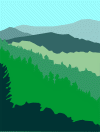


 You
should obtain a European Health Insurance Card (EHIC) before
leaving the UK, and carry your EHIC with you at all times in case of emergency. The EHIC is not a substitute for medical
and travel insurance, and only entitles you to emergency
medical treatment on the same terms as Slovakian nationals. It does not cover you for medical repatriation, on-going
medical treatment or treatment of a non-urgent nature. It is
essential therefore to have comprehensive
travel insurance.
You
should obtain a European Health Insurance Card (EHIC) before
leaving the UK, and carry your EHIC with you at all times in case of emergency. The EHIC is not a substitute for medical
and travel insurance, and only entitles you to emergency
medical treatment on the same terms as Slovakian nationals. It does not cover you for medical repatriation, on-going
medical treatment or treatment of a non-urgent nature. It is
essential therefore to have comprehensive
travel insurance.


 The Camping Card
International (CCI - Camping Carnet) is a worthwhile small
investment; it only costs Ł4.75, lasts for a year
and can be bought
through Camping Organisations eg
The Camping Card
International (CCI - Camping Carnet) is a worthwhile small
investment; it only costs Ł4.75, lasts for a year
and can be bought
through Camping Organisations eg  Camping
Gaz is simply unavailable in Slovakia; we failed to find even
any semi-legitimate sources of re-filling empty 907 cylinders. So
make sure you take a good stock of gas with you.
Camping
Gaz is simply unavailable in Slovakia; we failed to find even
any semi-legitimate sources of re-filling empty 907 cylinders. So
make sure you take a good stock of gas with you. Very few
Slovak campsites yet have wi-fi internet hotspots (those
that did have wi-fi are identified in the
Very few
Slovak campsites yet have wi-fi internet hotspots (those
that did have wi-fi are identified in the



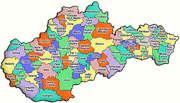

 For the
soundest advice and supply of Slovakian maps, as always we
recommend consulting:
For the
soundest advice and supply of Slovakian maps, as always we
recommend consulting: arte
published by the German cartographers Mair Dumont 1:2005k scale (see
right) price Ł6.50; details on The Map Shop web site.
arte
published by the German cartographers Mair Dumont 1:2005k scale (see
right) price Ł6.50; details on The Map Shop web site. The
1:100k scale Detailed Road Atlas of Slovakia (Podrobný
Autoatlas Slovenská Republika) (see left) published by the
Slovak military survey organisation VKU covers the whole of the country,
is superbly detailed and is
invaluable for travelling around.
The
1:100k scale Detailed Road Atlas of Slovakia (Podrobný
Autoatlas Slovenská Republika) (see left) published by the
Slovak military survey organisation VKU covers the whole of the country,
is superbly detailed and is
invaluable for travelling around. this seems ultra-expensive
at Ł48, it does cover the entire country and the mapping is
of excellent quality.
this seems ultra-expensive
at Ł48, it does cover the entire country and the mapping is
of excellent quality.
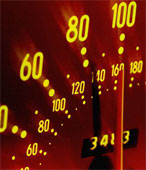
 state of development. The web
site below gives up to date information about current
motorway and highway development:
state of development. The web
site below gives up to date information about current
motorway and highway development: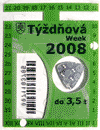 bought
at border-crossings, post-offices
and garages. They are not publicised and, unlike Austria, Vignette
information is not displayed at
borders or on motorways. The first
many people are aware of the need for a
Dial'nica známka is when
they are stopped and fined by the police when driving on a
motorway; unmarked police cars do patrol and penalties for
failing to have a vignette are costly. Signs displayed on some
major roads
state in English "Vehicles over 3500
kgs with payment". Vehicles over
3500kgs are restricted to 80 kph (50
mph) on main roads and motorways and
for them, a 5 day vignette will
cost 750 sk (about Ł13.90); there
are no extra charges when towing a trailer. The vignette comes
in two parts: one (see left) you stick in the windscreen top right
hand corner; write your vehicle registration number on
the backing-strip and keep it in case of being stopped.
bought
at border-crossings, post-offices
and garages. They are not publicised and, unlike Austria, Vignette
information is not displayed at
borders or on motorways. The first
many people are aware of the need for a
Dial'nica známka is when
they are stopped and fined by the police when driving on a
motorway; unmarked police cars do patrol and penalties for
failing to have a vignette are costly. Signs displayed on some
major roads
state in English "Vehicles over 3500
kgs with payment". Vehicles over
3500kgs are restricted to 80 kph (50
mph) on main roads and motorways and
for them, a 5 day vignette will
cost 750 sk (about Ł13.90); there
are no extra charges when towing a trailer. The vignette comes
in two parts: one (see left) you stick in the windscreen top right
hand corner; write your vehicle registration number on
the backing-strip and keep it in case of being stopped.
